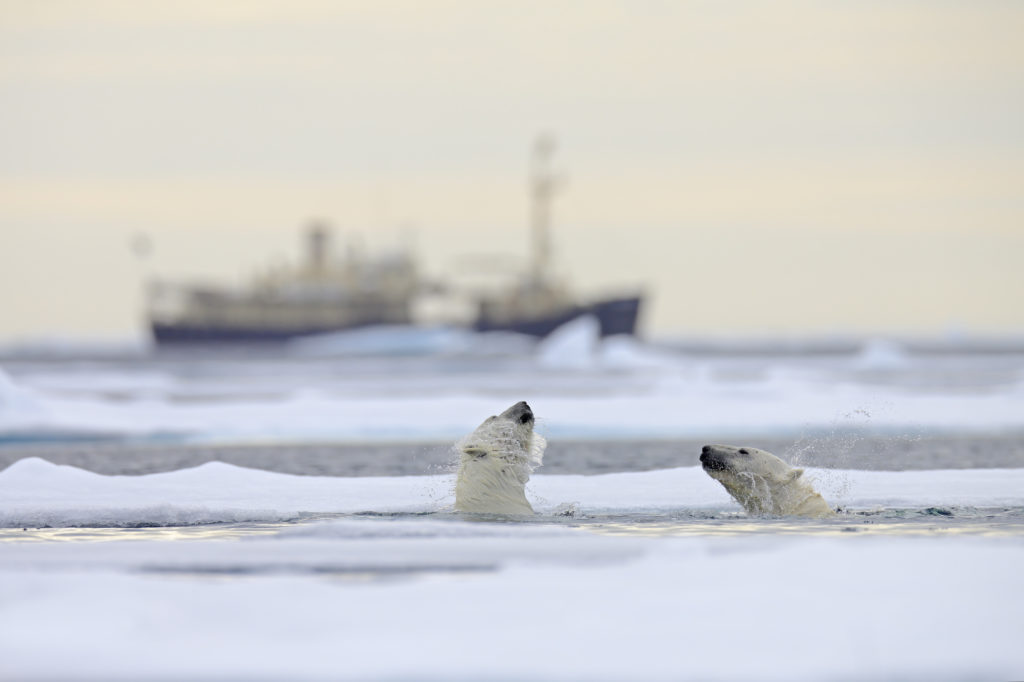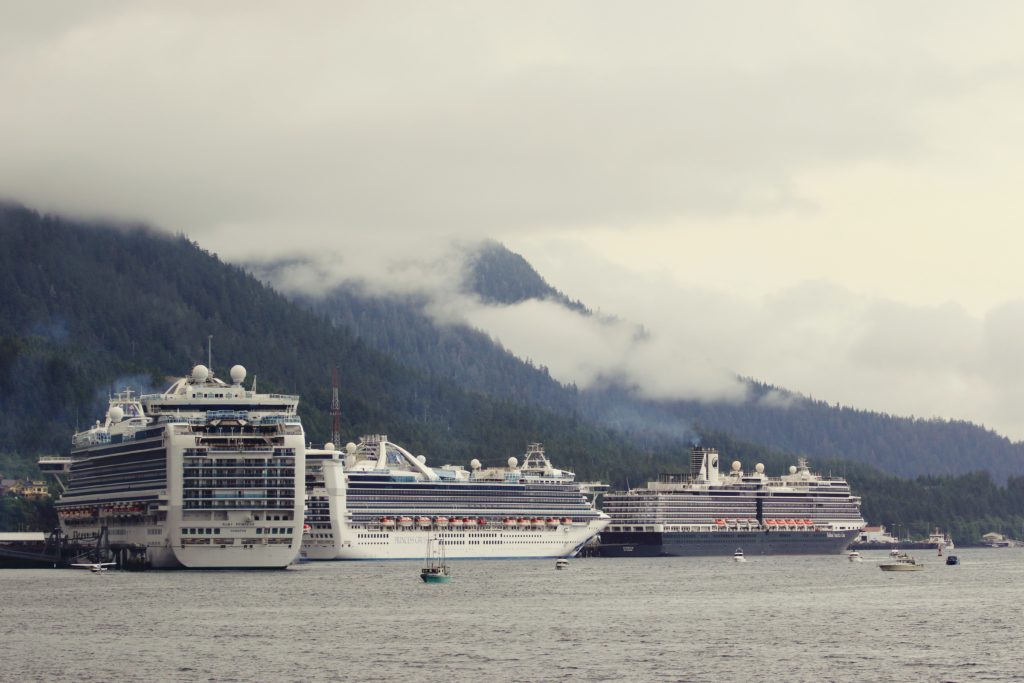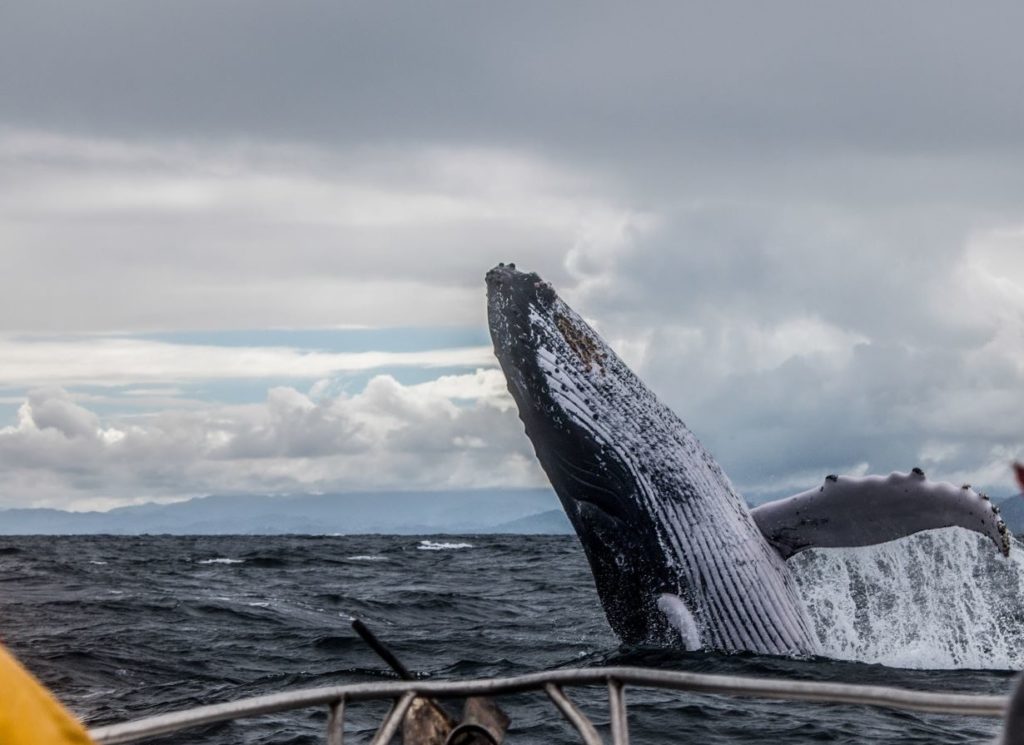More than a data dump: Behind WWF-Canada’s National Vessel Dumping Assessment
Our unprecedented National Vessel Dumping Assessment found that ships are generating billons of litres of dangerous waste — which collectively contain heavy metals, carcinogenic compounds, oils, microplastics, pathogens, nutrients, toxic chemicals and other pollutants — in Canada’s protected ocean areas each year.
To give you a behind-the-scenes look at the data on dumping, we spoke to Sam Davin, marine shipping specialist and the report’s lead author.

Why wasn’t info on how much waste is being produced, and where, previously available?
“Routine operational wastes” like greywater, sewage, bilge water and scrubber washwater have historically been given a pass by regulators. And, until recently, calculating the magnitude and distribution of waste on a national scale was hampered by technological limitations and data availability.
So how did you fill all these data gaps?
First, we identified the ships active in Canadian waters in 2019 using ship traffic (AIS) data. This tied each ship to a near-continuous series of time-stamped locations, enabling us to reconstruct their coordinates, speed and distance travelled. We coupled this with each ship’s unique attributes — ship type, engine power, design speed, crew and passenger capacity, and other variables that influence waste production.
This information was fed into our numerical model to calculate the amount of waste generated by every unique vessel over the course of 12 months.
Did any of the report findings surprise you?
We found that ships generate 147 billion litres of waste in Canadian waters annually. But what surprised me most is the amount of that waste — roughly 14.7 billion litres — that is produced in waters that Canada has explicitly set aside for the long-term conservation of nature.

What key factors influence how much waste ships creates?
There are many factors that influence how much waste a ship produces ranging from ship type, size and the number of people on board to less obvious factors such as sea conditions, route itineraries and the policies of individual operators. The type of activities that happen on a ship also matter. For example, cruise ships with pools and expansive laundry and kitchen facilities produce more greywater per person than cargo ships. But the single factor that most influences how much waste a ship produces is whether it is fitted with scrubbers.
How do we know the waste generated in protected areas is being dumped there?
What we’ve developed is a model to evaluate how much waste is being generated while ships are in protected areas.
We have a high degree of confidence that when a ship is using scrubbers in a protected area, the toxic washwater that’s used to “scrub” engine and boiler exhaust is being released right back into the ocean — because that’s how the vast majority of scrubber systems work. Scrubber washwater accounts for 97 per cent of all waste in our analysis.
Other waste streams, like sewage and greywater, can be temporarily retained in holding ranks that are emptied at more-or-less random intervals, so it’s difficult to predict the exact location where these tanks are emptied. In terms of the overall amount that gets dumped at sea, published data from the State of Alaska’s Cruise Ship Monitoring Program suggests that about 95 per cent of sewage and greywater are dumped. For bilge water, the literature suggests that that about 75 per cent is dumped.
Any amount of waste dumped in an MPA is too much.

These numbers give us a pre-pandemic view of dumping. What do you project future trends to be?
Demand for freight and cruises was at an all-time high before the pandemic — and that trend is likely to continue afterwards. Next month, the first cruise ship to call on Vancouver since the start of the pandemic will arrive, and many more are scheduled to follow. Climate change will also open the Arctic to increased ship traffic.
Without regulatory action, the amount of waste that ships produce and dump into the ocean — including in protected areas, which the government has committed to more than double to 30 per cent by 2030 — is only going to grow.
What are the biggest barriers to safeguarding our protected ocean areas and wildlife from dumping?
Inconsistent and ambiguous legislation is one of the biggest problems we face, as well as a lack of waste reception facilities in places like the Arctic that can handle the volumes of wastewater produced by large passenger ships. A comprehensively defined ban on dumping in MPAs would help reduce pollution in the areas in most need of protection.
Awareness is also an issue. Discharging operational wastes in Canada’s protected waters hasn’t historically been prohibited, so raising ship operators’ awareness about the risks associated with dumping waste (even treated waste) in MPAs and reforming ingrained institutional practices will be a challenge.


